A selection of the best varieties of cabbage for winter storage and recommendations for its cultivation
In order for cabbage to be stored all winter and at the same time not to lose its taste and useful properties, it is important to study the requirements for varieties for storage and choose the most suitable crop for your region. Of no less importance are the quality of the seed, the rules of growing and harvesting.
The content of the article
Requirements for the variety of cabbage for storage
Not every culture will fit for long-term storage. Early ripening varieties are not laid for the winter, mid-ripening varieties are left for only 2-3 months.
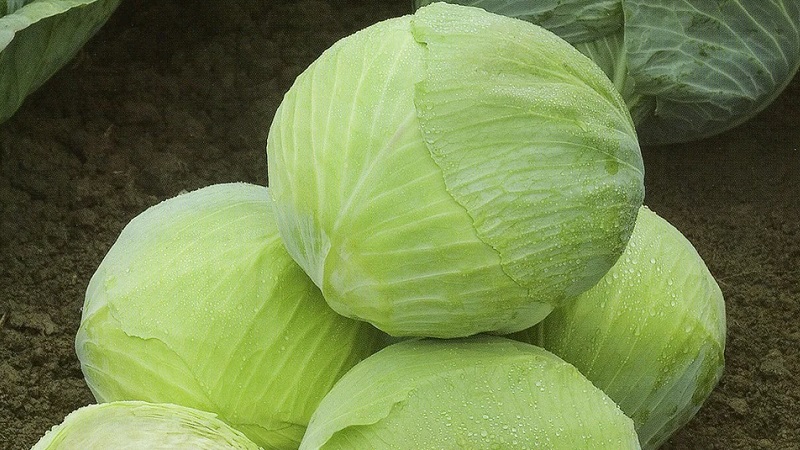
To provide a full supply of vegetables, use medium-late or late plants... Their advantages:
- excellent taste;
- high nutritional value;
- versatility in application: vegetables are eaten fresh, stored and processed;
- the minimum amount of nitrates;
- long shelf life.
Late cabbage varieties differ from early ones in appearance: they have dense heads of cabbage with a green or white color, the leaves are quite tight and tightly pressed against each other.
The best varieties of cabbage for winter storage
We bring to your attention well-proven varieties and hybrids, which gardeners most often select for long-term storage.
Gingerbread man F1
One of the most popular hybrids in all regions of Russia, can withstand storage for up to 7 months... The peculiarity of such vegetables is a white-yellow cut with a characteristic shimmer.
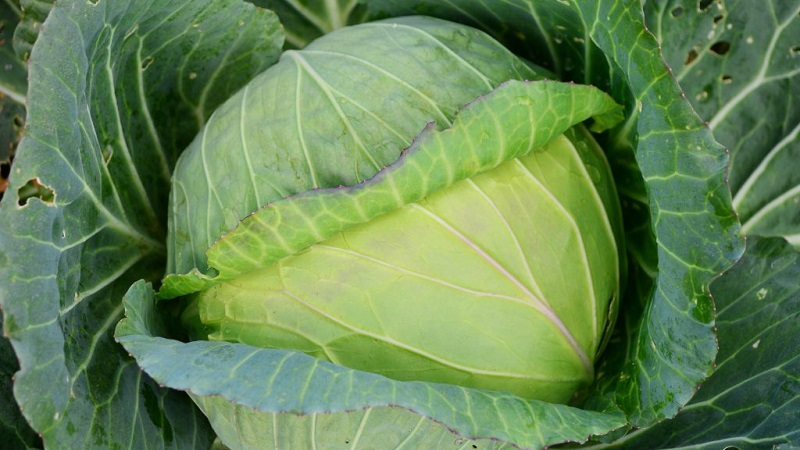
The average weight of a dense head of cabbage is 4.2 kg, foliage is green. The duration of the ripening of the hybrid is up to 150 days. Yield indicators are high, up to 12 kg per 1 m2.
Important! Gingerbread man is often rotting during storagetherefore vegetables are periodically checked for damage.
Snow White
A variety that gets its name from the white color of both the inner and outer foliage. The average weight of a vegetable is about 2.5–4 kg. Heads of cabbage do not spoil until 6-7 months and more, they are used for preparing baby food... The culture is resistant to most diseases. Productivity - 7-9 kg per m2.

Wintering 1474
One of the most frost-resistant varieties with a blue-green color, bred specifically for cultivation in the northern regions. Cabbage taste improves significantly after 3-4 months of storage... Heads of cabbage do not spoil until 8 months.
The variety has a long growing season.: up to 175 days from the moment of germination. It is resistant to fungal diseases, rot and cracking.
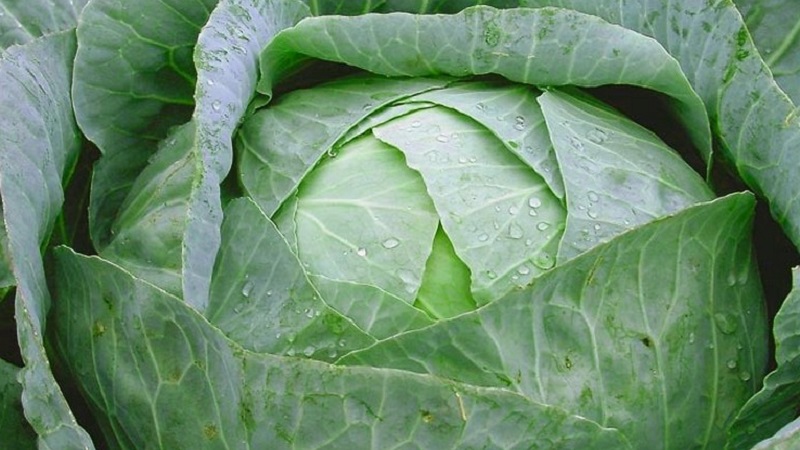
Sugar Loaf
A late-ripening variety with a raised and spreading leaf rosette. The leaves are large with a grayish-green color and a waxy bloom, growing season - up to 150 days from the moment of emergence... Harvesting is recommended after the onset of frost - so the sugar content to the leaves will be higher. After a month of storage, vegetables acquire a sweetish taste.
The variety is resistant to many diseases, including fusarium, bacteriosis, carina. Under favorable conditions, the Sugarloaf will be stored until the end of spring.
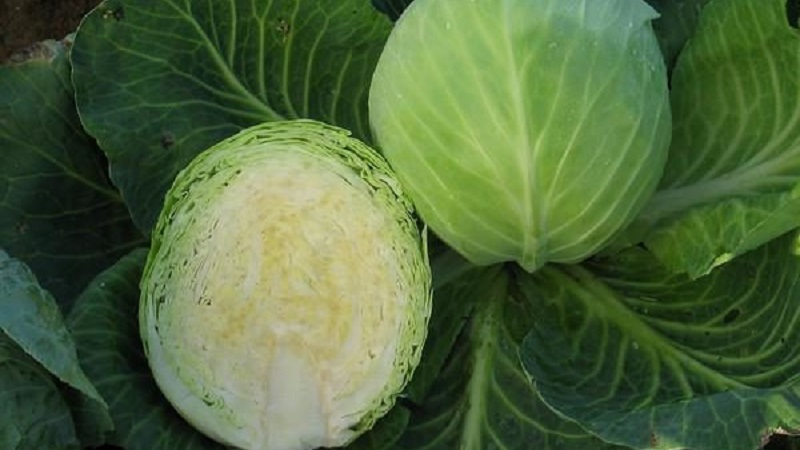
Merchant's wife
The merchant's wife is popular with farmers due to its excellent marketability and taste. Medium late variety with a growing season of up to 150 days, heads of cabbage are dense without voids. The average weight of a fork is 2.5 kg, the color is green on the outside and white on the inside. The culture is resistant to disease. The harvest is stored for up to 4 months.
Amager 611
Heads of cabbage reach maturity in 145-148 days and grow to a medium size... The leaves are smooth, the edges are large-wavy, tightly pressed against each other.
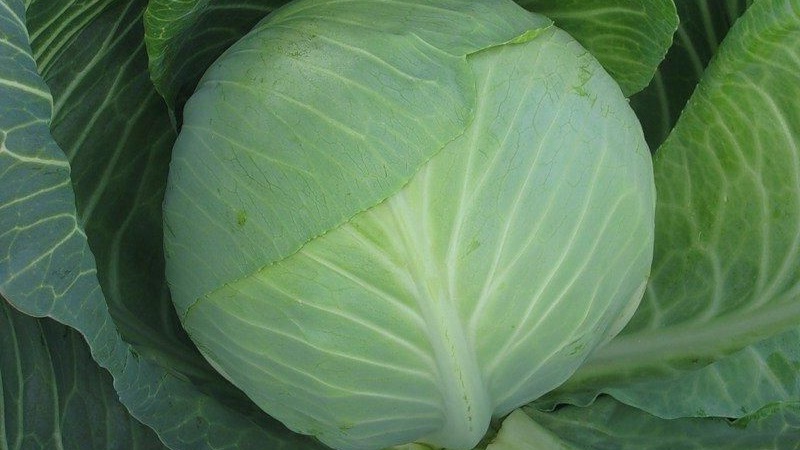
The variety is resistant to low temperatures, average yield from 1 m2 - 5-7 kg... In low humidity conditions, cabbage does not spoil until April.
Important! During storage, Amager undergoes punctate necrosis and gray rot. To prevent diseases, vegetables are laid absolutely dry, kept at a constant temperature of 0 ... + 2 ° C.
How to choose a variety
In order not to be disappointed in the planted culture, they carefully approach the choice of seeds. Main criteria:
-
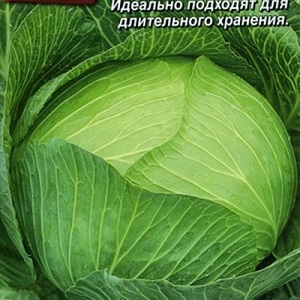 Cabbage Merchant
Cabbage MerchantGrowing region... For certain areas there are suitable varieties of cabbage, information on the optimal cultivation place is on the seed package. The longer the growing season, the warmer the region must be for planting the vegetable.
- Ripening terms... Depending on the purpose of using cabbage, varieties are selected according to the ripening period. The early ones contain few sugars, their leaves are tender soft, suitable for fresh consumption. Mid-season ones contain more nutrients, late ones are best suited for long-term storage and salting... It is better to plant several varieties at once with different types of ripening in order to enjoy the cabbage as long as possible.
- Local selection... To be sure of a rich harvest, choose varieties bred in the region of growing.
Before purchasing seeds, it is worth asking the seller for a quality certificate: this will save you from buying a fake.
Features of growing and harvesting
When harvesting cabbage for long-term storage it is important to adhere to the rules of its cultivation and collection of ripe vegetables:
- It is best to plant cabbage in the area where peas, cucumbers, tomatoes, and carrots grew before. After corn, a good harvest cannot be expected.
- Light or loamy soil is optimal. Heads of cabbage grown on sandy loam soil are not stored for so long.
- Fertilizers can both prolong and reduce the shelf life of cabbage. Phosphorus-potassium dressing will increase the storage time. Cabbage grown on nitrogen-rich soil will quickly deteriorate: the amount of dry matter in its foliage is reduced, which is why the leaves are prone to rotting.
- Harvest when the daytime temperature is at + 2 ... + 8 ° C, and at night there are frosts down to -3 ° C. The heads of cabbage collected earlier quickly begin to wither.
- Vegetables are harvested in dry weather so that they do not have to be further dried. The forks are cut with a sharp knife, leaving 2-3 cm of stumps. For storage in a suspended state, the stumps are left.
- The top sheets are not removed, leaving at least 2-3 cover sheets, which will protect the cabbage from diseases and mechanical damage.
- Before wintering, heads of cabbage are sorted: only whole specimens are left, without signs of lethargy, rot, disease or the presence of pests. Vegetables of medium size, tight and round and slightly flattened are best suited. Loose heads of cabbage are unsuitable for storage.
It can be useful:
How to make a storage box for potatoes on the balcony
Nuances for different regions
Climatic conditions at different latitudes are very different from each other, therefore each region has its own characteristics of agricultural technology.
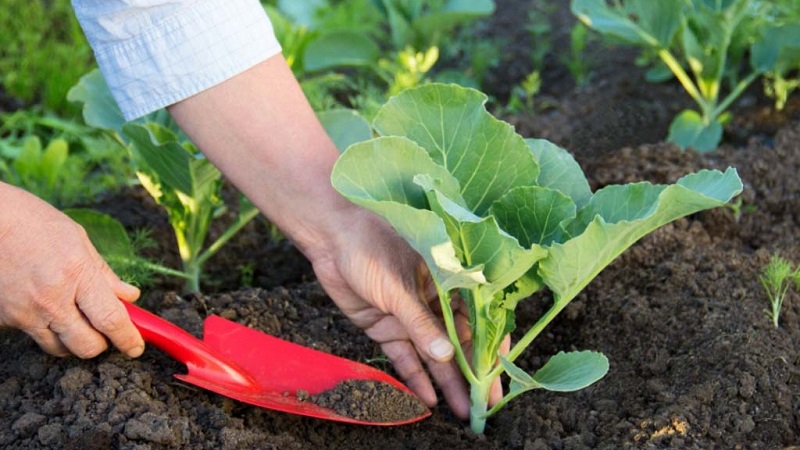
In outskirts of Moscow
The predominance of cloudy days and erratic spring weather create difficulties in the early stages of crop cultivation. To achieve a good harvest, some features are taken into account:
- cabbage is planted in open ground with seeds, seedlings are covered until the onset of stable warm weather;
- choose mid-ripening or mid-late varieties, since the late ones will not have time to ripen;
- in the absence of precipitation in summer, plantings are regularly watered.
In Siberia
Harsh climatic conditions exclude the cultivation of cabbage in the open field from seeds, therefore, the seedling method is used.
Attention! Due to the short summer, it is better to abandon planting late varieties with a long growing season. Mid-season and mid-late plants are preferred.
Specially varieties adapted to the harsh climate: Sibiryachka 60, Blizzard, Nadezhda, Tochka.
Seedlings are planted in open ground in the second half of May, at first, the beds are covered. In August, mid-season cabbage is harvested for fresh consumption or pickling. Medium late vegetables are harvested in September.
In the Urals
The unstable Ural climate is characterized by sharp changes in temperature and intense movement of air masses:
- seedlings are grown in warm beds, in greenhouses or at home;
- in May, plants are planted in open ground, the site is covered with dense spunbond: it will protect the crop from pests and low temperatures;
- to protect against a cold snap, the beds are mulched with black film.
Varieties grow well in the region Hope and Blizzard, hybrids Atria, Aggressor, Megaton.
In the middle lane
The middle zone is characterized by a temperate continental climate with humid summers and moderately frosty winters. Here cabbage is grown in seedlings... Optimal planting of late-ripening hybrids, the ripening period of which is from 160 to 170 days.
Conclusion
To preserve cabbage for the winter without losing its taste and benefits, medium-late or late varieties are planted. Climatic features are taken into account: the longer the growing season of the crop, the warmer it should be in the region of its cultivation. Heads of cabbage are harvested at + 2 ... + 8 ° С, specimens with damage are not suitable for storage.